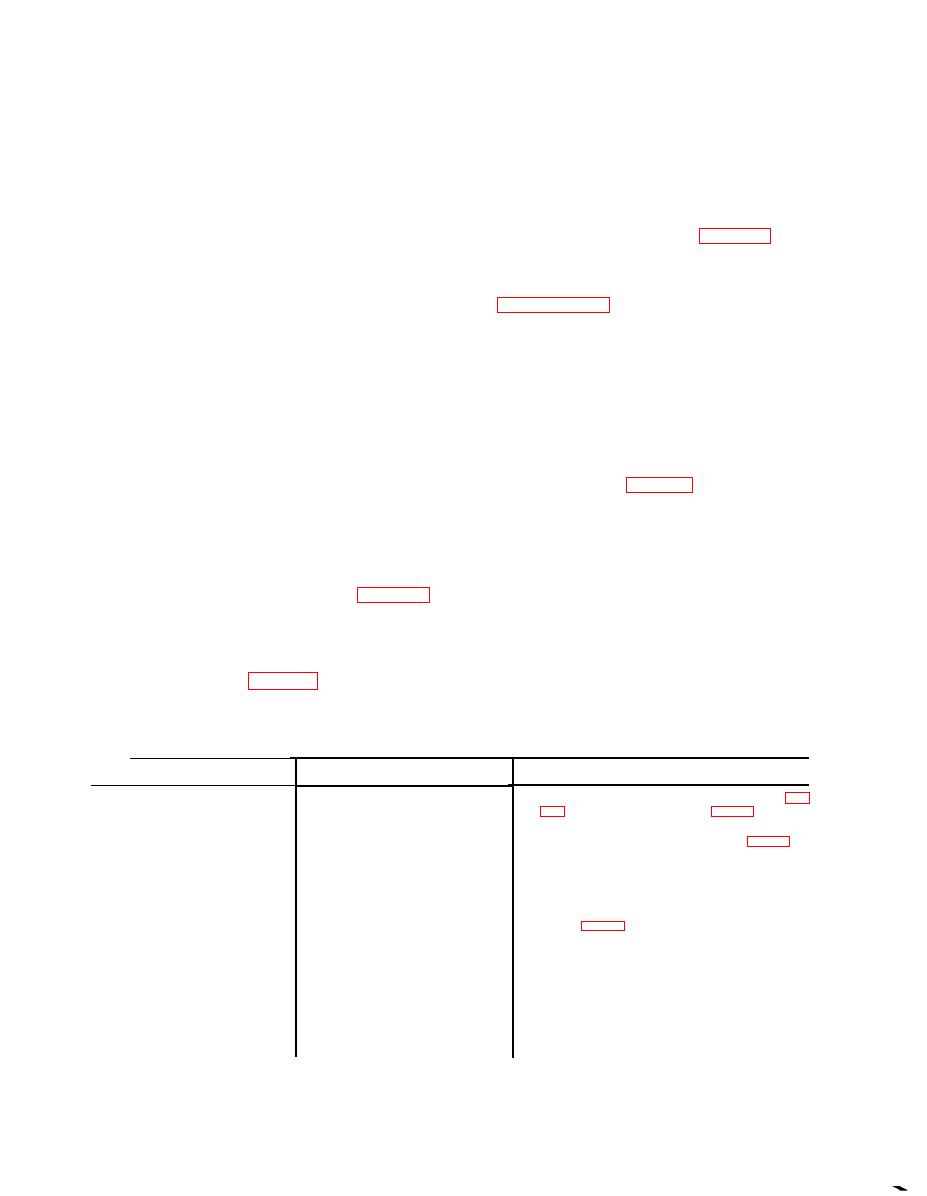
TM 11-6625-2629-14&P
defective modulation meter is to sectionalize the
support troubleshooting chart contains symp-
fault. Sectionalization means tracing the fault to
toms which will aid in localizing trouble to a
a major circuit responsible for the abnormal
component part.
(4) Intermittent troubles. In all tests, the
operation. The second step is to localize the fault.
Localization means tracing the fault to a defective
possibility of intermittent troubles should not be
component which is responsible for the abnormal
overlooked. Usually, this type of trouble can be
condition. Some faults may be located by sight;
made to occur by tapping or jarring the equip-
ment. Check the wiring and connections to the
however, the majority of the trouble must be
located by checking voltages and resistances.
parts of the modulation meter (fig. FO-3).
b. Sectionalization. The modulation meter
CAUTION
consists of five main sections: the local oscillator,
Do not attempt removal or replacement of
t h e intermediate frequency amplifier, the
parts before reading the instructions in
discriminator, the audio amplifier, and the power
supply. The first step in tracing trouble is to
7-7. Checking Filament and B + Circuits for
locate the circuit or circuits at fault as follows:
Shorts
(1) Visual inspection. Visual inspection will
a. When to Check. When any of the following
help locate faults without testing or measuring
conditions exist, check for short circuits and clear
circuits. A 11 meter readings and other visual signs
the troubles before applying power.
should be observed and an attempt made to
(1) When the modulation meter is being
sectionalize the fault to a particular section.
serviced and the nature of the abnormal symp-
(2) Operational tests. Operational tests
toms is not known.
frequently indicate the general location of trouble.
(2) When the abnormal symptoms reported
In many instances, the tests will help in deter-
from operational test (para 3-4) indicate possible
mining the exact nature of the fault.
power supply troubles.
c. Localization. The tests listed below will aid
b. Conditions for Test.
in isolating the trouble. First, localize the trouble
(1) Remove the dust cover.
to a single stage or circuit, and then isolate the
(2) Remove all tubes from their sockets.
trouble within that circuit by voltage, resistance,
(3) Remove the power indicator lamp.
and continuity measurements.
c. Measurements. Use the multimeter and
(1) Signal tracing. Signal tracing (para 7-10)
make the resistance measurements indicated in
will help in isolating the fault to a specific stage.
the following chart. If abnormal results are ob-
(2) Voltage and resistance measurements.
tained, make the additional isolating checks
Abnormal voltage or resistance measurements
outlined below. When the fault y part is found,
may pin-point a fault, Use resistor inductor, and
repair the trouble before applying power to the
capacitor color codes (fig. FO-1) to find normal
unit.
readings and compare them with reading taken.
(3) Troubleshooting chart. The general
Table 7-2. Resistance Measurements
---.
Isolating procedure
Normal indication
Point of measurement
be
B e t w e e n ground and pin 9 of
Resistance
If resistance is zero, check for short at XV13 (fig.
should
XV13.
approximately 36 ohms.
on the oscillator. If the resistance is infinite,
check for open resistor R131 on TB6 (fig. 7-2).
Infinite resistance.
B e t w e e n ground and pin 4 of
If a short or finite resistance is read, check the
XV16.
wiring to and at sockets XV15 ami XVIG (fig. 7-
2).
B e t w e e n ground and pin 9 of
If a short or finite resistance is read, check the
Infinite resistance.
XV10.
wiring to and at sockets XV10, XV11, and
XV12 (fig. 7-2).
Resistance
be
Between ground and the junction
should
If resistance is zero, check for shorted filter
approximately 250K.
of C101A and C102. Be sure of
c a p a c i t o r C101A or C102. If resistance is
meter polarity to obtain correct
approximately 110 ohms, check for short in
reading. (The higher of the two
C103. If resistance is approximately 165 ohms,
readings is the correct one. )
check for short in C101 B or bypass capacitor
Note: If using the TS-352(*)/U,
C50, If any other resistance below 250K is
the lead connected to the OHMS
observed, check all the bypass capacitors (fig. 7-
connector should be grounded.
3 and FO-2).
7-2


